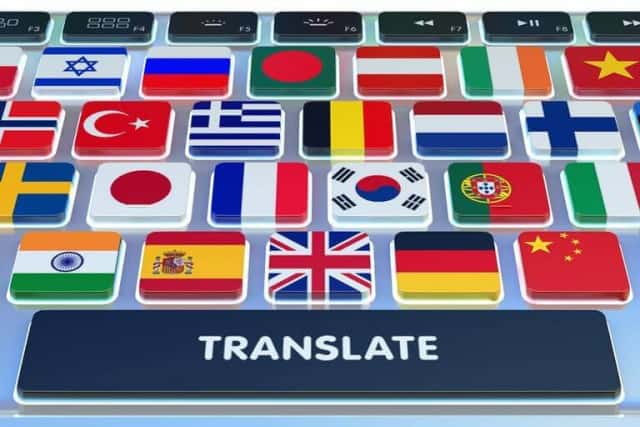The Internet has been globalizing the economy as well as accelerating the growth of businesses. Of course, the translation process has also changed in recent years.
Even so, some companies still operate on outdated, outdated and inefficient models. Only through a modern process equivalent to current industry operating standards can they truly realize Benefits of Translation services.
Often the role of technology in translation is rarely seen or used very faintly, leading to limiting the efficiency of the translation process. So creating holes in the whole work.
On the other hand, an integrated, technology-based translation method will pave the way for you to easily access a new market and reduce the burden on employees. This is achieved by aligning demand for content in different languages and business goals.
Updating Traditional Translation Methods To Meet Modern Needs
Business managers often have a fragmented view of the localization process. They use separate departments such as business administration systems, translation management system (TMS), translators, market assessors, quality control staff and a whole host of third parties to co-develop the content. Requires a project manager to steer all of these mobile components in a way that allows for the rapid release of new content.
The above complex method makes sense given the situation 30 years ago. At that time, we did not have the necessary technology to allow different teams to conveniently collaborate in a centralized space. We are forced to provide content to other teams and work with a multitude of sources to perfect translations that work in new markets. At that time, there was no Internet to help us contact translators or collaborate in real time.
But today, these obstacles are gone. Equal to one localization process management platform, we can jump through stages and connect faster. As an example, consider how simplified the job of hiring a translator is. Back in the 80s, you would have needed a project manager who knew translators and where to go to hire them. For now, all it takes is a platform to identify translators for the target language and evaluate their job completion to find the best fit for your project. By using data to navigate the translator selection process, administrators will increase their ability to find the best translators and speed up the hiring process.
The process of working together has also changed. On the cloud platform, translation notes and business terms are always updated. Pieces of content will be assigned and they will be processed in real time, allowing managers to quickly check and review project progress. Managers can directly contact the translator without having to wait days or weeks, to fix problems and prevent trifles from becoming more serious. Technology has truly bridged the gap between employees across the globe, wherever they are.
Thanks to these new capabilities, project managers can switch from distracting their attention to fully focusing on the excellent completion of the management task. They can run the project without having to deal with errands like following up with suppliers or checking the qualifications of translators, tasks that lead to delays. As a result, they can focus on the overall outcome instead of the side effects.
Of course, the only way to fully realize the benefits of translation services is to use a modern solution from start to finish. That solution includes project submission, document posting, results evaluation, and reporting all in one place.
But unfortunately, most managers are unaware of the existence of such a solution. They invest in a simple translation management system and collaborate with external parties – often people who are not familiar with the system – and end up having to deal with numerous administrative tasks. The best available solution is integrating the services of the translation unit with technology so you can get the most out of a comprehensive system.
>>> See more: 7 Online Translation Tools Recommended by Translators
5 Benefits of Modern Model Translation Services
Not only limited to content, the benefits of translation services using modern localization platforms also reach every corner of the business, from revenue to planning and business. Here are 5 key benefits of using a translation solution throughout.
1. Save time
A job as simple as recruiting and testing translators can take weeks. With a modern platform, most of the work is already done for you. The translators have signed a contract to work and the company will use their previous projects as a measure of competence as well as to gain a deeper understanding of the translator's skills. When a client posts a project, the system uses the data to find and select the most appropriate translator for the job. This will shorten a step that once lasted a few days to just a split second.
When properly automated, even importing projects is simplified. A change in the source database can trigger tasks in any other language. Those tasks will be automatically assigned and published, to ensure that the content on the site is always up to date.
2. Transparency in the process
In the past, tracing all the different tasks and consolidating them in one place was one of the biggest obstacles for project managers. Through an end-to-end platform, that manager can now easily see the progress of every planned task. They are also proactively notified in advance of arising problems so that they can be handled promptly.
>>> See more: 7 Things to Note for Good Translation
3. Improve return on sales (ROI)
Tracing the value of projects is only possible in the cross-platform. Project managers can view tasks and keep costs to a minimum. For example, they can check how much they have invested in hand-patches of a product in Spanish and compare that to its reception. They can then compare these results with other languages as well. This process enables managers to make data-driven decisions to identify the best places to allocate translation funds and cut unnecessary costs.
4. Improve quality
The translation process not only needs to ensure the correct wording, but also to maintain the stability of the brand. Using up-to-date vocabulary tables and translation notes helps ensure consistency across all content, regardless of language. These programs are always changing and accumulating based on the changes added during the translation process, which means that the quality will increase with each project.
5. Security
Security vulnerabilities were a very serious problem for translation systems in the past. With so many files constantly being sent to different destinations, printed, and stored in separate locations, it's easy to lose track of a document. By storing all content in a single system, the risk of leakage is minimized. Well-built platforms go a step further in security by allowing only key individuals to download content, thus keeping sensitive information out of the system. .
>>> See more: Top Top Translation Software Today.
Modern updates have increased the benefits of translation services in many important ways. By providing a more collaborative platform, tasks can be seamlessly merged, increasing profitability and saving time. Through the process of establishing the foundation to provide a cross-cutting solution, the manager took the first steps in modernizing his translation program.

Nguyen Trung Khang - Talented interpreter and translator, passionate about translation
Nguyen Trung Khang is a talented interpreter and translator, with many years of experience in the field of translation and linguistics. He graduated from Ho Chi Minh City University of Education, majoring in Linguistics in 2015.
After graduating, Mr. Khang participated in a professional interpretation and interpretation training course at the University of Foreign Languages - Hanoi National University. He achieved a high-level certificate in interpreting and interpreting, and was also awarded a master's degree in linguistics.


